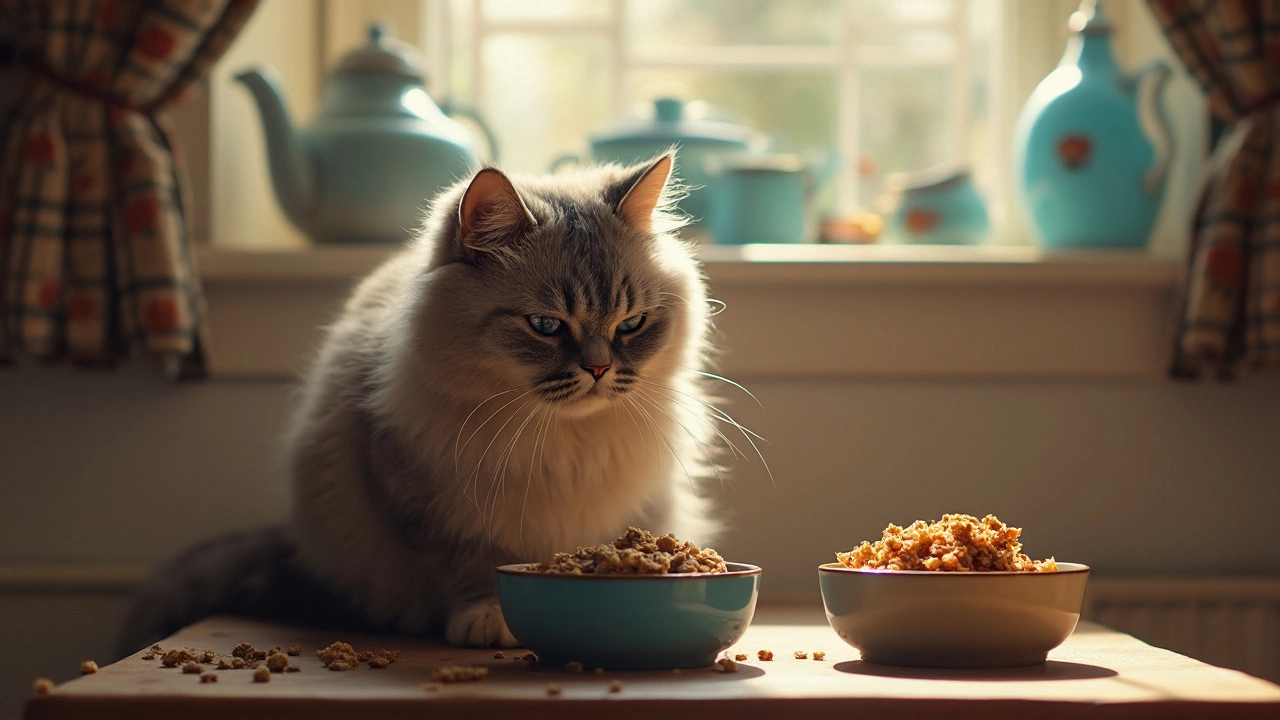Best Cat Food Texture: Wet, Dry or Mixed – What Works for Your Kitty?
Choosing the right texture for your cat’s meals can feel like a guessing game. Some cats gobble down dry kibble in seconds, while others turn their noses up at anything that isn’t a saucy morsel. The good news? You don’t have to pick one forever. Most owners find a combination of wet and dry works best for mood, health, and pocket.
Why Texture Matters
Texture isn’t just about taste; it affects hydration, dental health, and how full your cat feels. Wet food adds moisture, which helps cats who don’t drink much water. Dry kibble crunches away plaque and is easy to store. If your cat has kidney issues, extra moisture can ease the strain. If they’re an indoor prowler with strong teeth, a crunchy kibble can keep gums healthy.
How to Match Texture to Your Cat’s Needs
Age matters. Kittens need soft, easy‑to‑chew food because their teeth are still coming in. A mix of wet and a tiny kibble designed for kittens gives the right nutrients without choking hazards. Senior cats often prefer softer textures, but a small portion of dry food can help maintain dental health.
Health conditions. If your vet flagged a urinary issue, lean toward wet food or add water to dry kibble. Cats on a weight‑loss plan may feel fuller with wet meals because they’re more calorie‑dense.
Personal preference. Some cats are texture‑obsessed. Offer a taste test: put a spoonful of wet food in one bowl and a handful of kibble in another. Watch which one they attack first. Rotate flavors and textures every few weeks to keep their palate interested.
Budget and convenience. Dry food lasts longer and is cheaper per serving, making it great for daily feeding. Wet food is pricier but perfect for a quick, nutritious snack or a meal after a vet visit. Buying in bulk and freezing portions can lower costs.
Here’s a simple feeding schedule you can tweak:
- Morning: ½ cup dry kibble (choose a grain‑free, high‑protein brand).
- Midday: ¼ cup wet food (mix a flavor they love).
- Evening: ½ cup dry kibble or another ¼ cup wet, depending on activity level.
Adjust portions based on weight and activity. If your cat is gaining weight, cut back the wet portion slightly and add a bit more playtime.
Finally, keep an eye on the ingredients. The best texture won’t help if the food is full of fillers. Look for real meat first, limited carbs, and no artificial colors.
In short, there’s no one‑size‑fits‑all answer. Mix wet and dry, watch your cat’s health, and tweak as needed. Your kitty will thank you with a happy purr and a clean litter box.

Pate vs Shreds Cat Food: Which Texture Wins for Your Feline?
Wondering if pate or shreds is better for your cat? Explore texture, nutrition, and tips for picky eaters to help your cat thrive.
View more